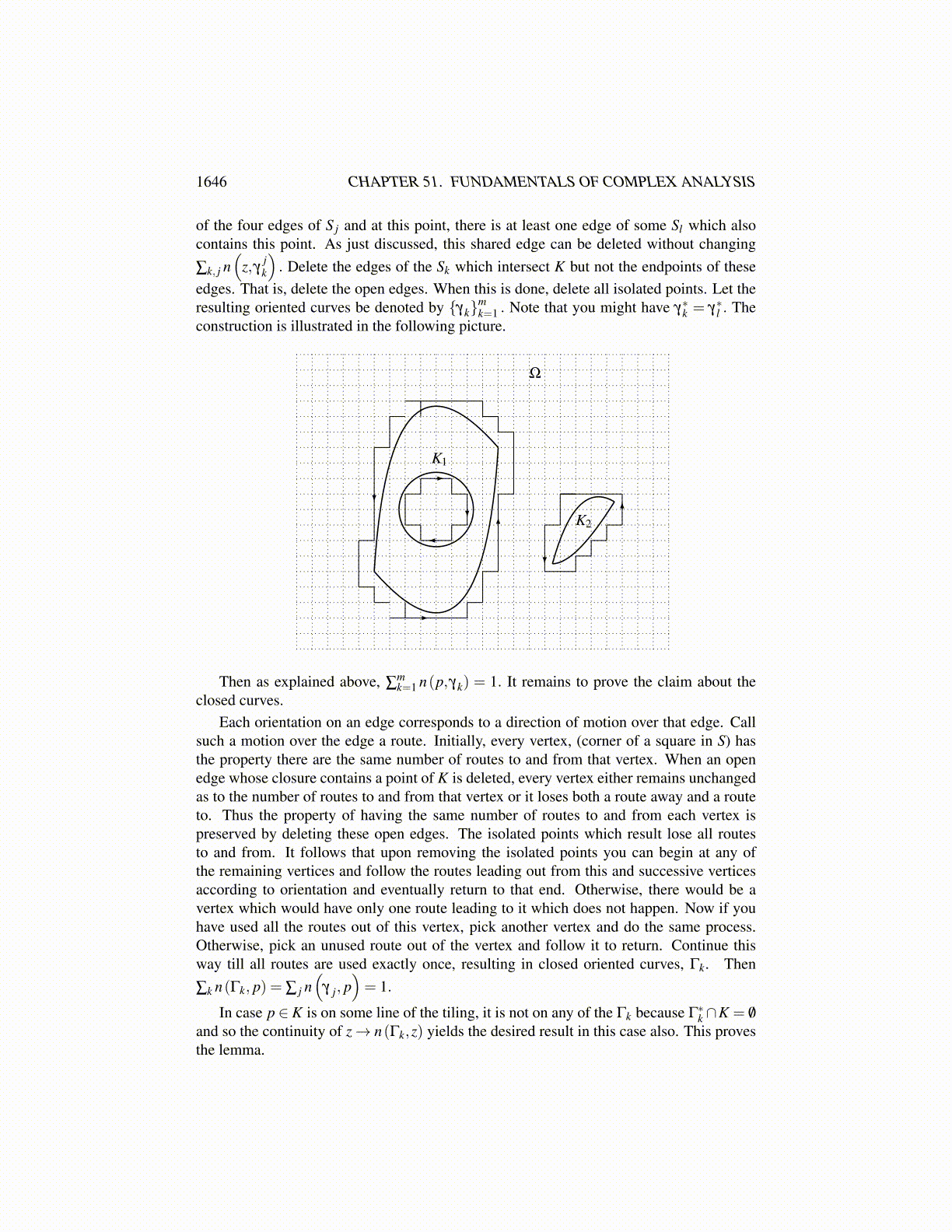
1646 CHAPTER 51. FUNDAMENTALS OF COMPLEX ANALYSIS
Proof: Pick a point, z0 ∈ Ω and let V denote those points, z of Ω for which thereexists a curve, γ : [a,b]→ Ω such that γ is continuous, of bounded variation, γ (a) = z0,and γ (b) = z. Then it is easy to verify that V is both open and closed in Ω and therefore,V = Ω because Ω is connected. Denote by γz0,z such a curve from z0 to z and define F (z)≡∫
γz0 ,zf (w)dw.Then F is well defined because if γ j, j = 1,2 are two such curves, it follows
from Corollary 51.7.22 that∫
γ1f (w)dw+
∫−γ2
f (w)dw = 0, implying that∫
γ1f (w)dw =∫
γ2f (w)dw.Now this function, F is a primitive because, thanks to Corollary 51.7.22
(F (z+h)−F (z))h−1 =1h
∫γz,z+h
f (w)dw =1h
∫ 1
0f (z+ th)hdt
and so, taking the limit as h→ 0, F ′ (z) = f (z) .
51.7.5 An Example Of A Cycle
The next theorem deals with the existence of a cycle with nice properties. Basically, you goaround the compact subset of an open set with suitable contours while staying in the openset. The method involves the following simple concept.
Definition 51.7.24 A tiling ofR2 =C is the union of infinitely many equally spaced verticaland horizontal lines. You can think of the small squares which result as tiles. To tile theplane or R2 = C means to consider such a union of horizontal and vertical lines. It is likegraph paper. See the picture below for a representation of part of a tiling of C.
Theorem 51.7.25 Let K be a compact subset of an open set, Ω. Then there exist continu-ous, closed, bounded variation oriented curves
{Γ j}m
j=1 for which Γ∗j ∩K = /0 for each j,Γ∗j ⊆Ω, and for all p ∈ K,∑m
k=1 n(Γk, p) = 1while for all z /∈ Ω,∑mk=1 n(Γk,z) = 0.
Proof: Let δ = dist(K,ΩC
). Since K is compact, δ > 0. Now tile the plane with
squares, each of which has diameter less than δ/2.